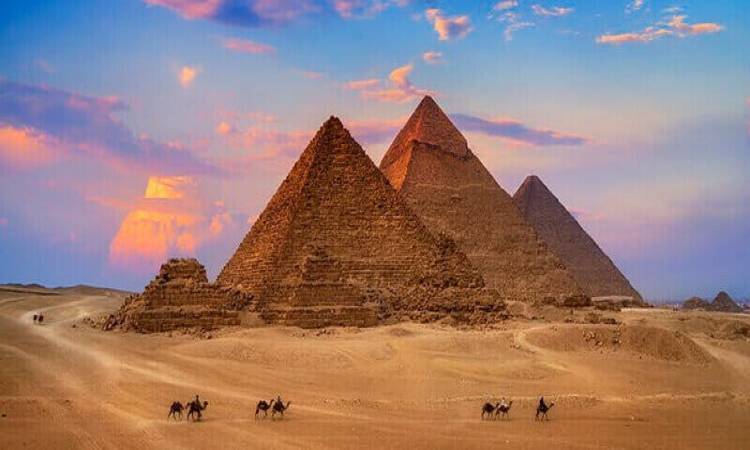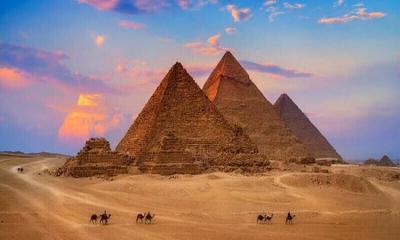In the age of social media, some users exploit the significant interest in ancient Egyptian civilization and its surrounding mysteries to disseminate misleading information aimed at attracting engagement. The latest of these misleading posts claims that the stones used to build the Great Pyramid (Pyramid of Khufu) "have air protrusions," which implies they are man-made rather than natural.
The posts state that the stones of the Great Pyramid "contain air protrusions, indicating that they are manufactured and not cut from mountains." It further questions: "How were they made, how have they endured all this time, and how has no one been able to discover what lies within the Great Pyramid despite all the available technology?"
According to the official website of the Egyptian Ministry of Tourism and Antiquities, the Great Pyramid was "built from local limestone, while it was originally completely covered with high-quality limestone casing, which was brought from Tura quarries via boats that reached the pyramid."
This information is confirmed by Egyptian archaeology expert Ashraf Mohy El-Din, who is the General Director of the Giza Pyramids. The expert describes the claims promoted by the posts as "lies that have no scientific basis." He elaborates that "the three famous pyramids in Egypt were built from local limestone."
Mohy El-Din asserts that there are no air protrusions in the stones of the Great Pyramid, and that they are natural and not manufactured as claimed by the posts.
Archaeologist and Egyptology researcher Ahmed Saleh, who previously served as General Director of Abu Simbel and Nubian Temples, agrees with Mohy El-Din. Saleh confirms that "the three pyramids were built from local limestone," describing the widespread posts as mere "fantasies."
The two experts explain that King Khufu built the pyramid as his tomb and that the construction project took twenty years. Saleh mentions that it is likely that Khufu's cousin, named Ham-Eyun, oversaw the construction of this pyramid which reaches a height of 146.5 meters; however, erosion and the disappearance of the small pyramidion that once crowned it have reduced its height to 138.8 meters today.
The experts note that the Pyramid of Khufu contains more than two million limestone blocks, in addition to about 8,000 tons of granite that were brought from Aswan in Upper Egypt and used in King Khufu's burial chamber.
Saleh points out that many theories have attempted to explain how the pyramids were built. He highlighted a project carried out by the Ministry of Tourism and Antiquities in collaboration with the Faculty of Engineering at Cairo University and the Institute for Heritage Preservation and Innovation in Paris, which relied on one of these theories suggesting that there were spiral passages inside the pyramid used to lift the stones to the upper parts.




